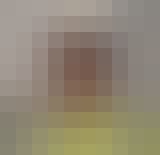The Foundations of Teaching for Learning programme is for anyone who is teaching, or who would like to teach, in any subject and any context - be it at school, at home or in the workplace. With dynamic lessons taught by established and respected professionals from across the Commonwealth, this eight course programme will see you develop and strengthen your skills in teaching, professionalism, assessment, and more. As you carry on through the programme, you will find yourself strengthening not only your skills, but your connection with colleagues across the globe. A professional development opportunity not to be missed. Curriculum is a framework for guiding teaching and learning. This course provides an opportunity for you to consider the relationship between the teacher, the learner and the curriculum. Enhance your course by joining the Commonwealth teaching community on our website, Facebook and Twitter.
Lecture 2: Aspects of Curriculum

Skills You'll Learn
Education, Curriculum Development, Pedagogy, Planning
Reviews
4.6 (388 ratings)
- 5 stars72.42%
- 4 stars18.29%
- 3 stars5.67%
- 2 stars1.54%
- 1 star2.06%
HH
Mar 3, 2018
Foundations of Teaching for Learning: Curriculum course added a lot t my knowledge and practice as a school leader. I advise that anyone who works in the education field take this course.
CS
Dec 11, 2020
This course is highly recommended for those who are in the teaching profession. It helped me gain an in-depth understanding of how the curriculum works in the teaching-learning process.
From the lesson
Getting to know the curriculum
This week introduces the course's emphasis on the relationship between the teacher and the curriculum. The sessions this week deal with three basic topics: the concept of curriculum, the teacher’s curriculum, and adapting to curriculum. These topics will help to broaden your understanding of curriculum and the ways in which it effects students’ experience.
Taught By

Associate Professor Suseela Malakolunthu
Director of the Leadership for Learning and Research Network

Professor John MacBeath
Professor Emeritus
